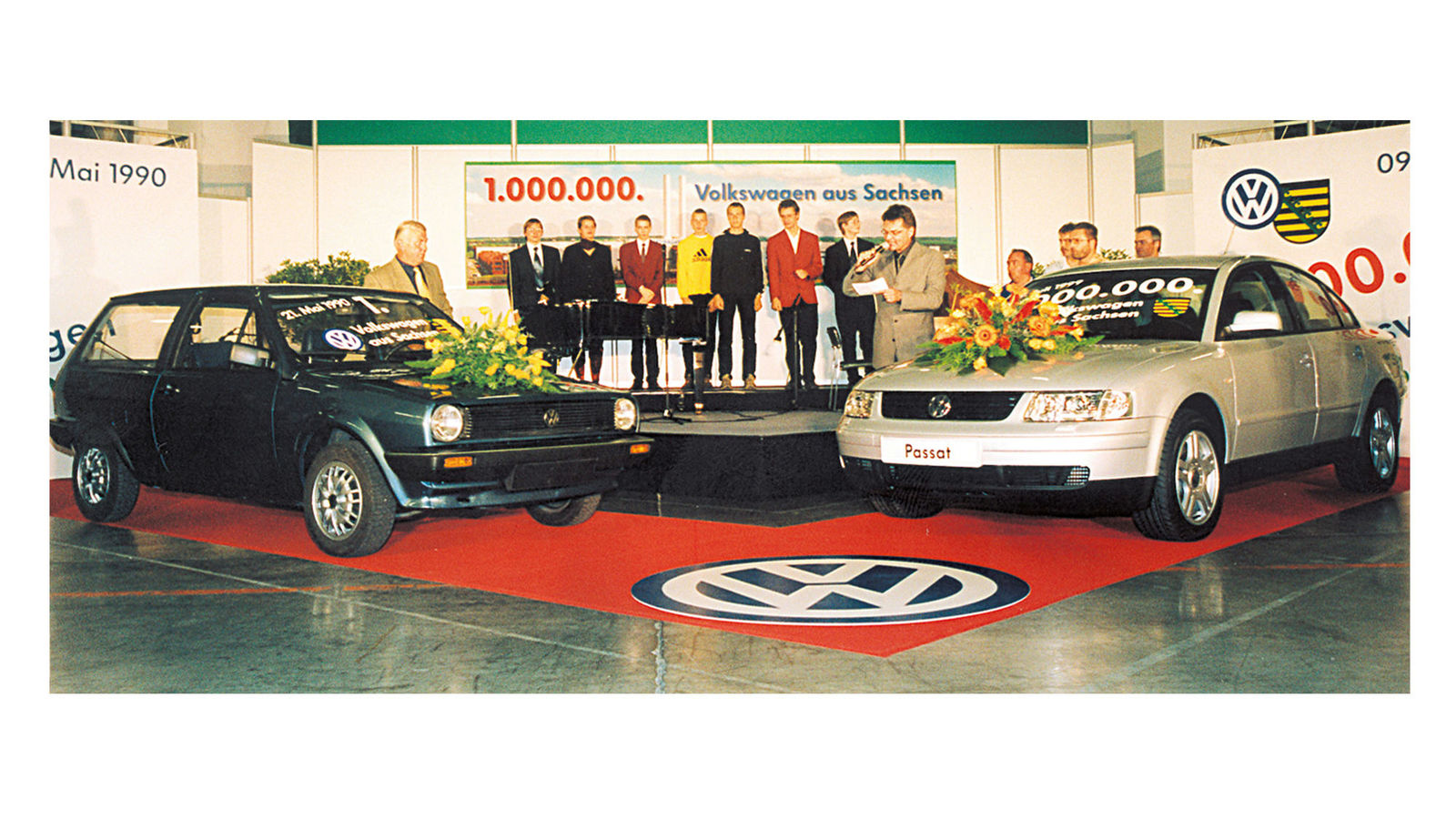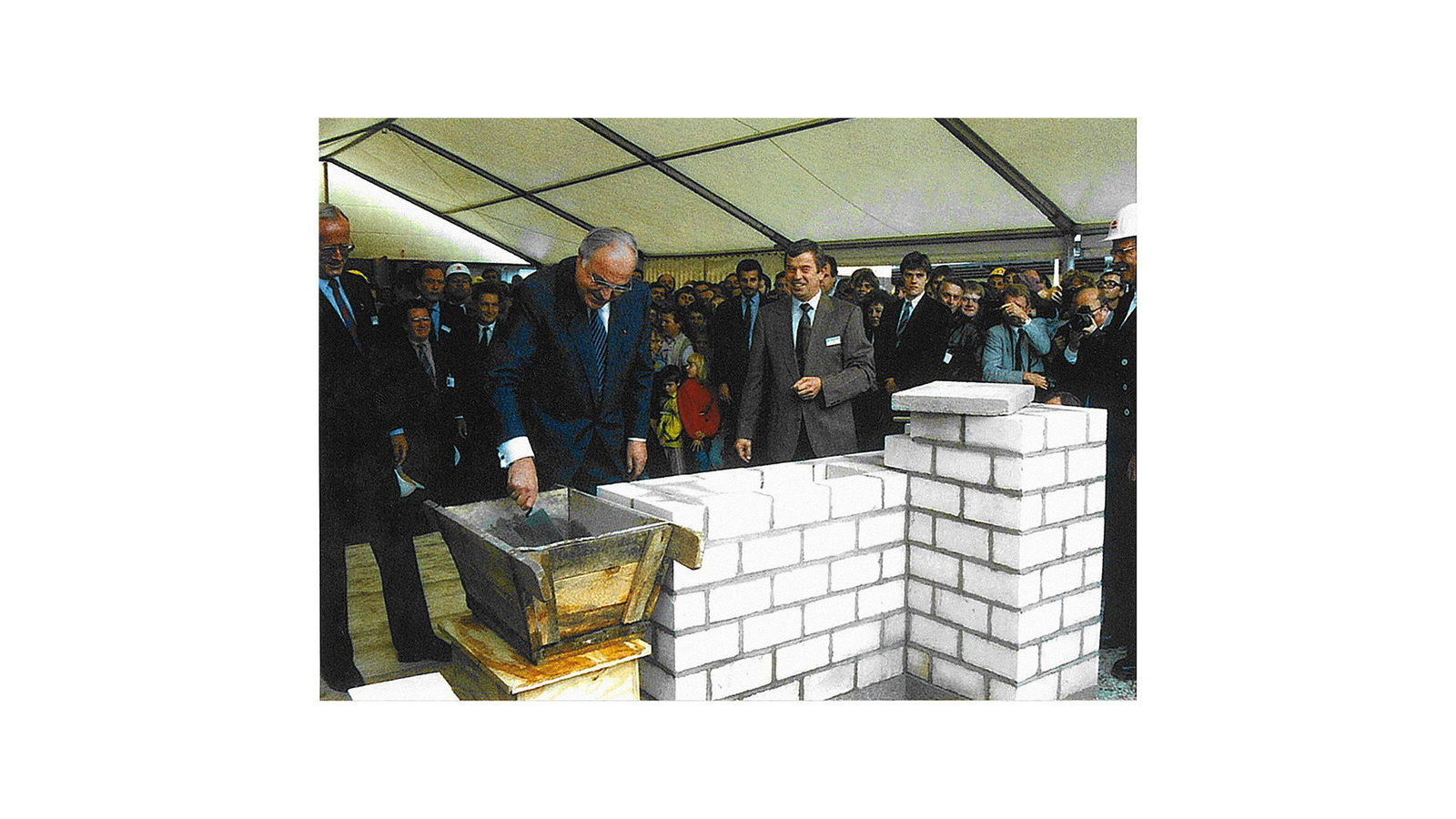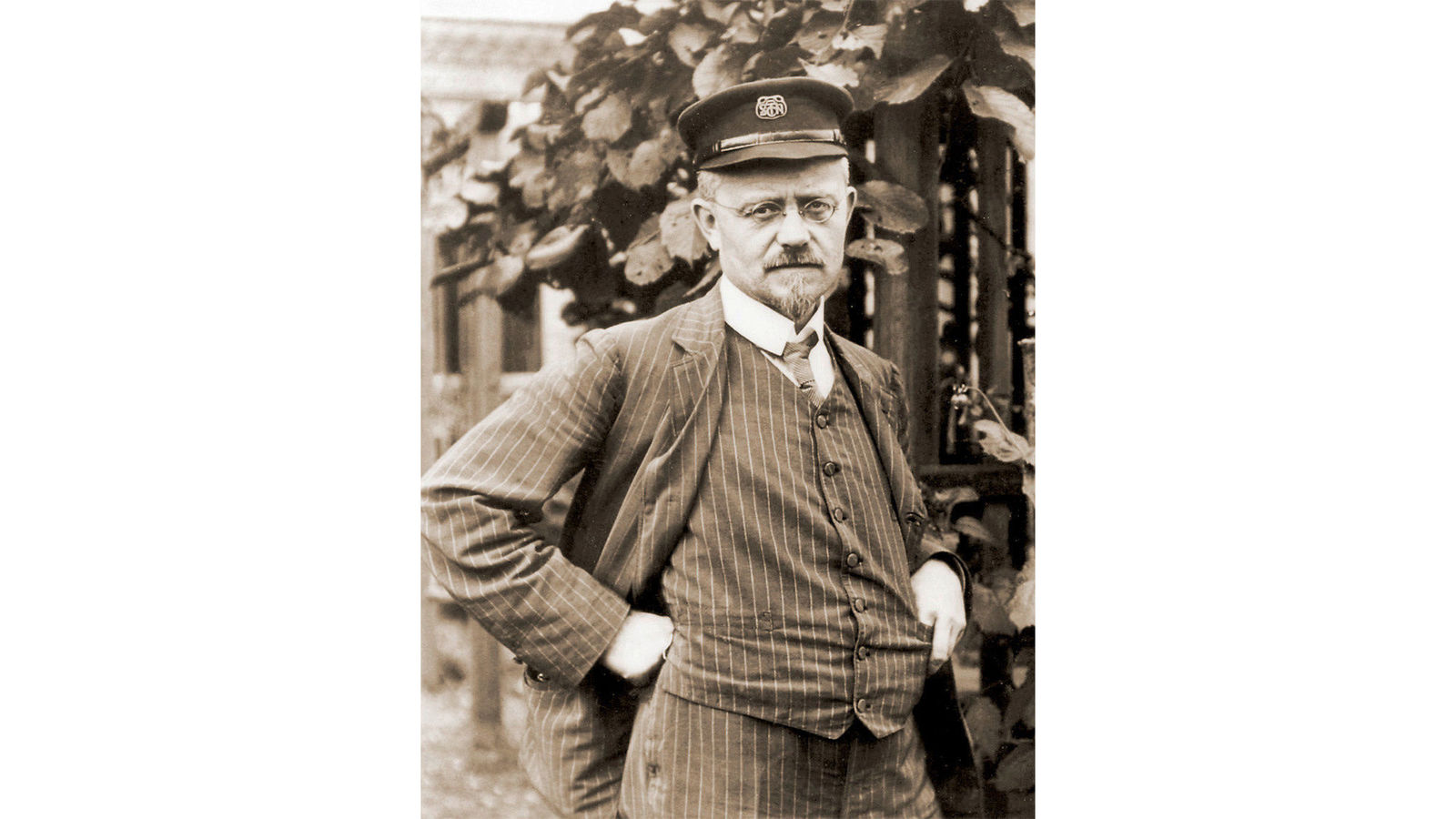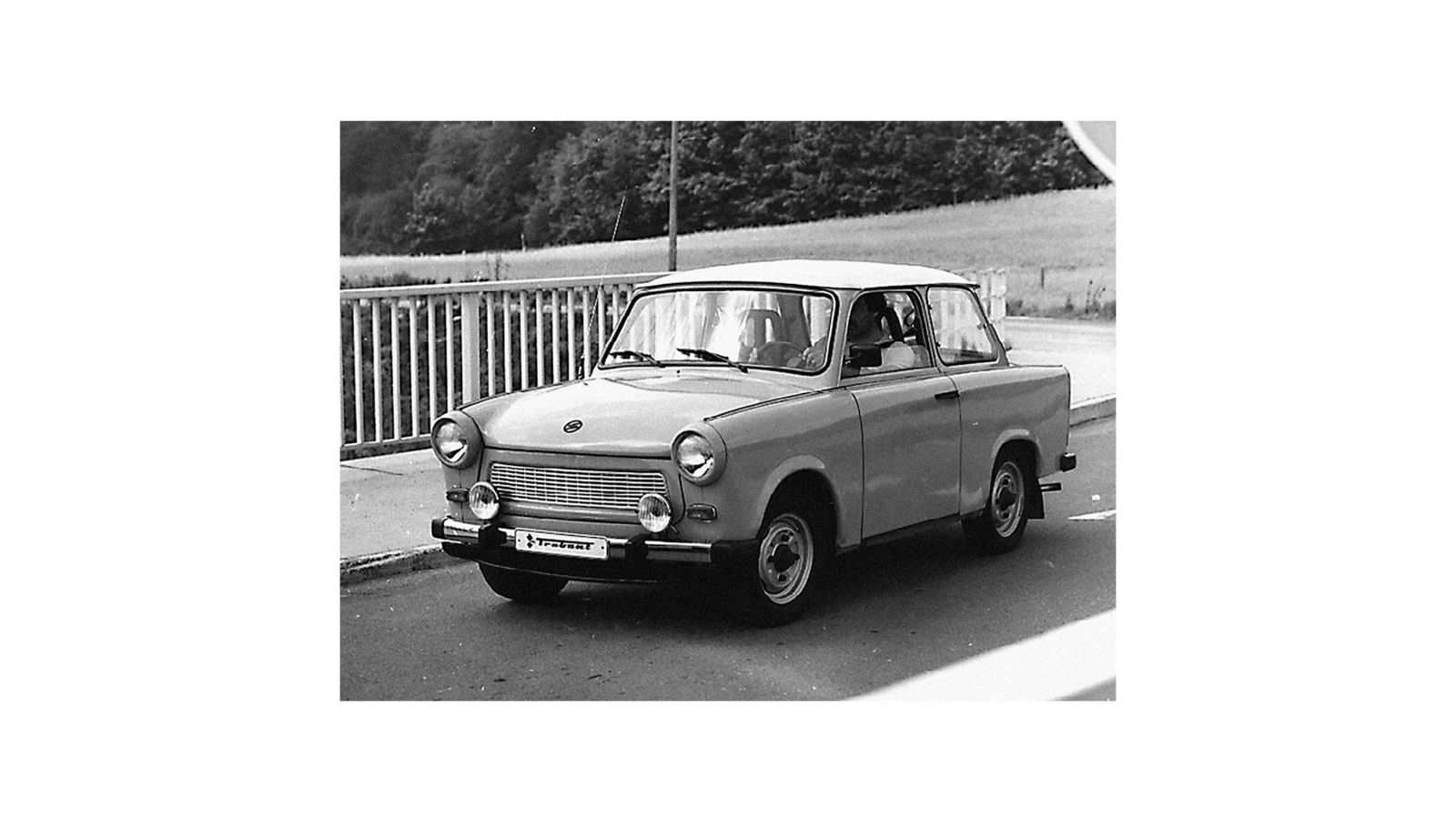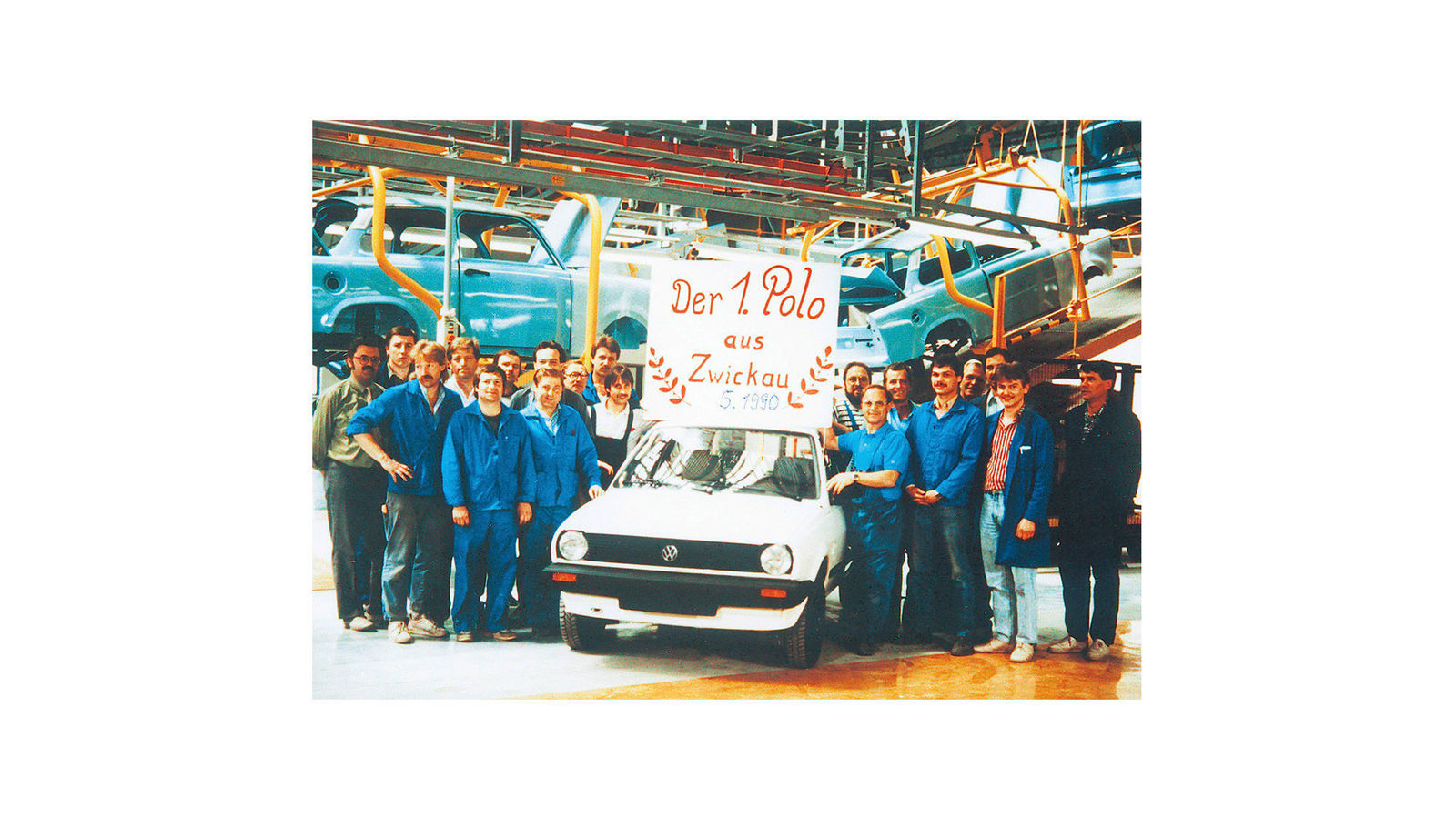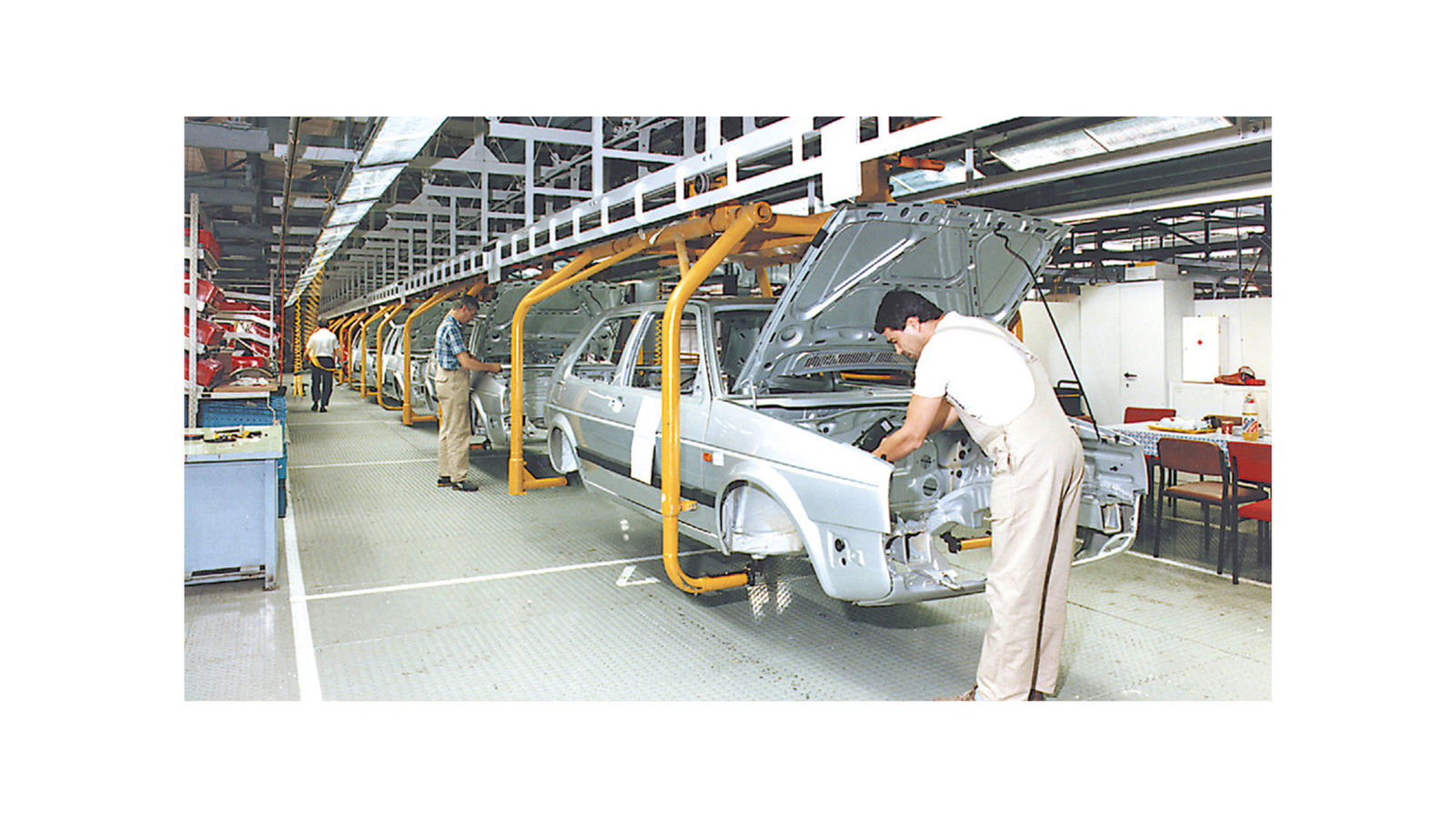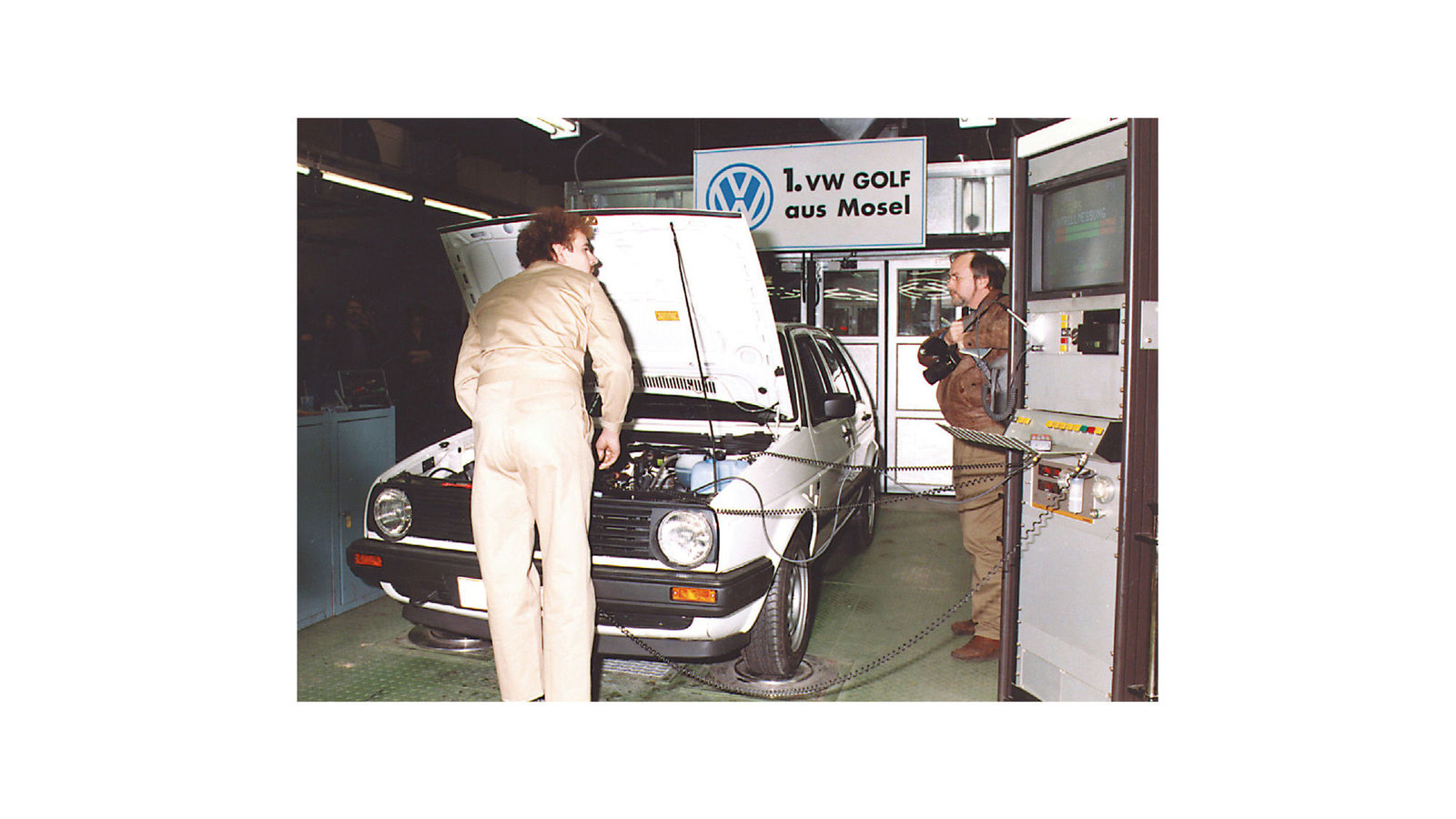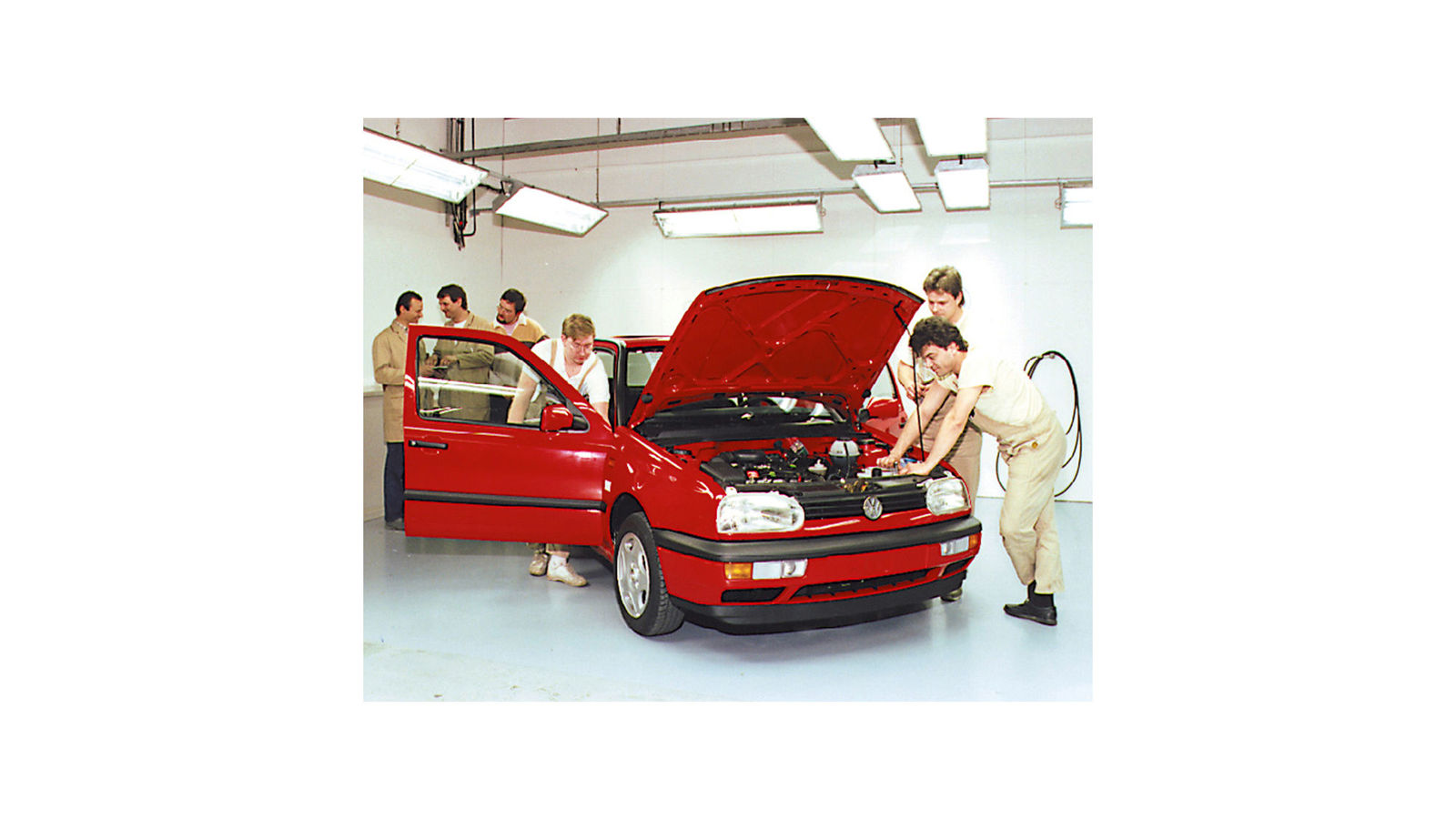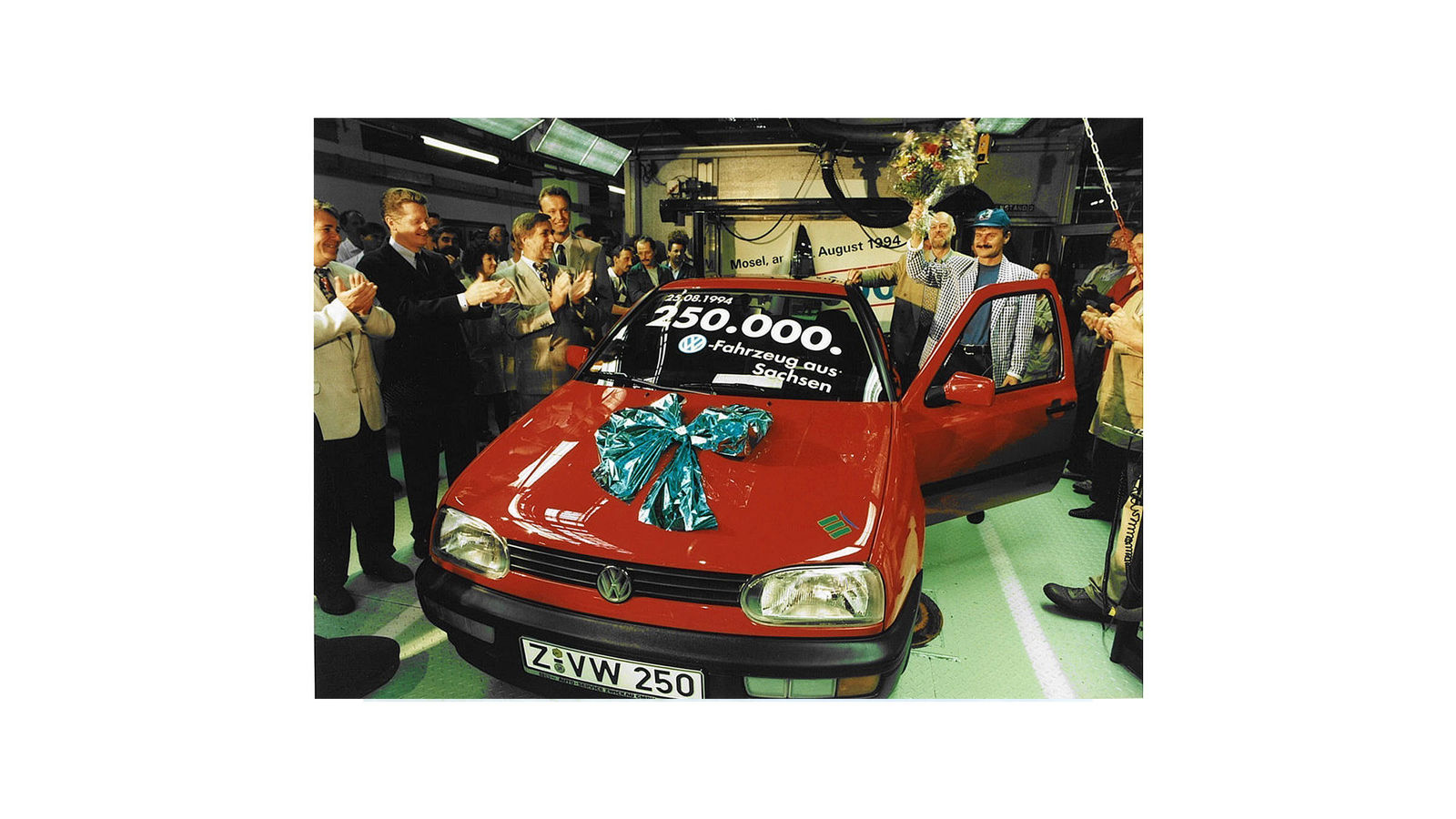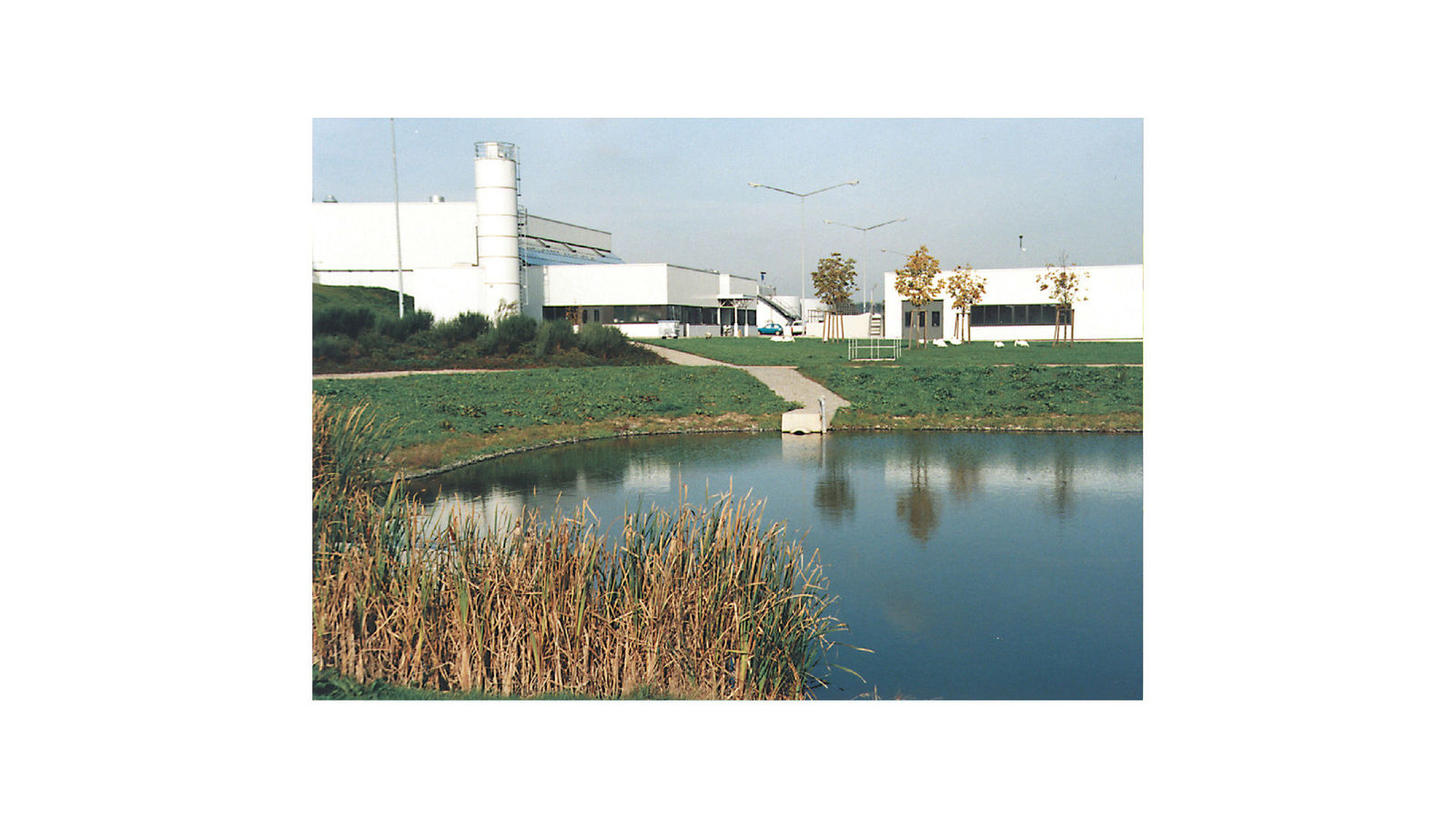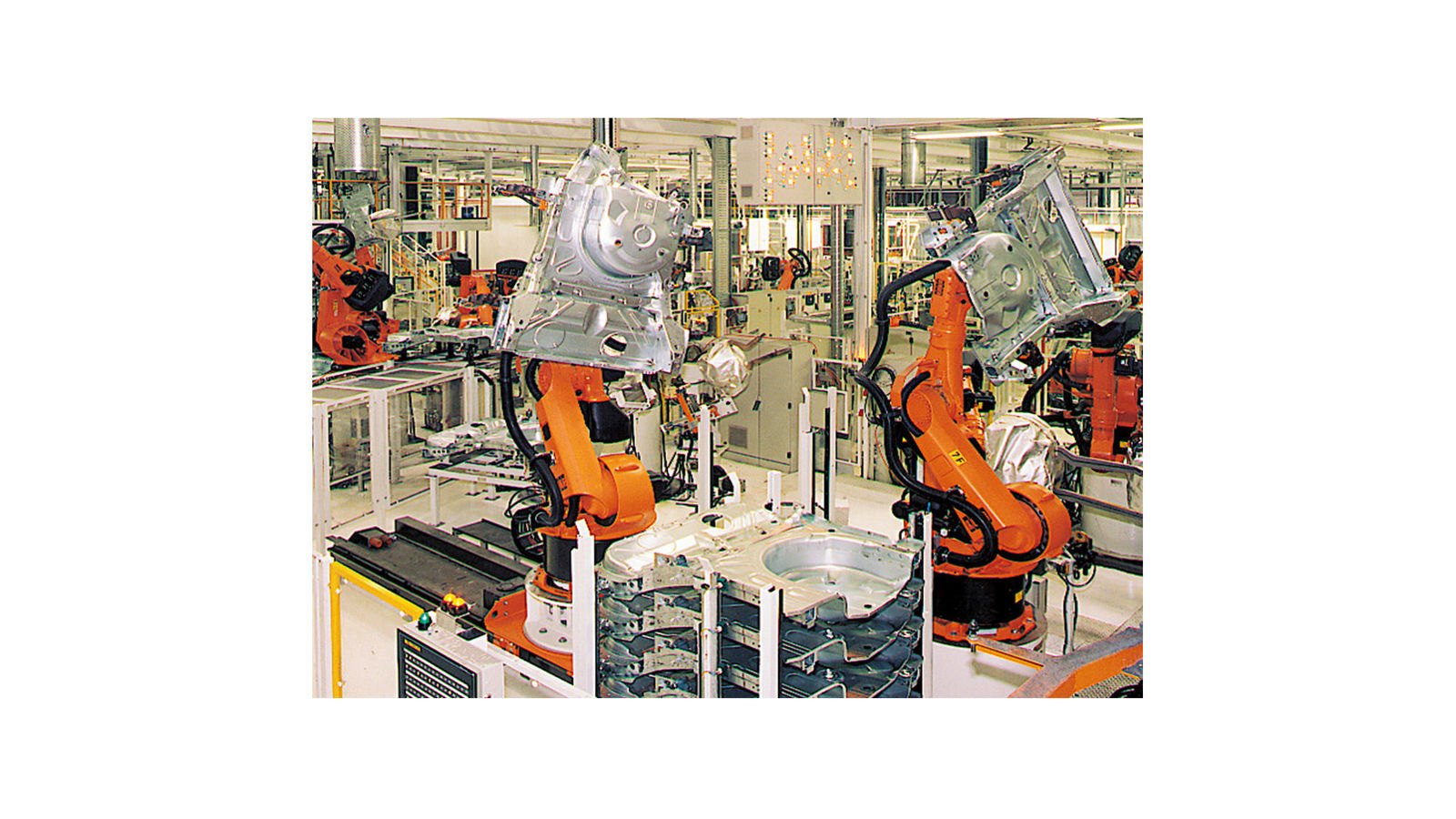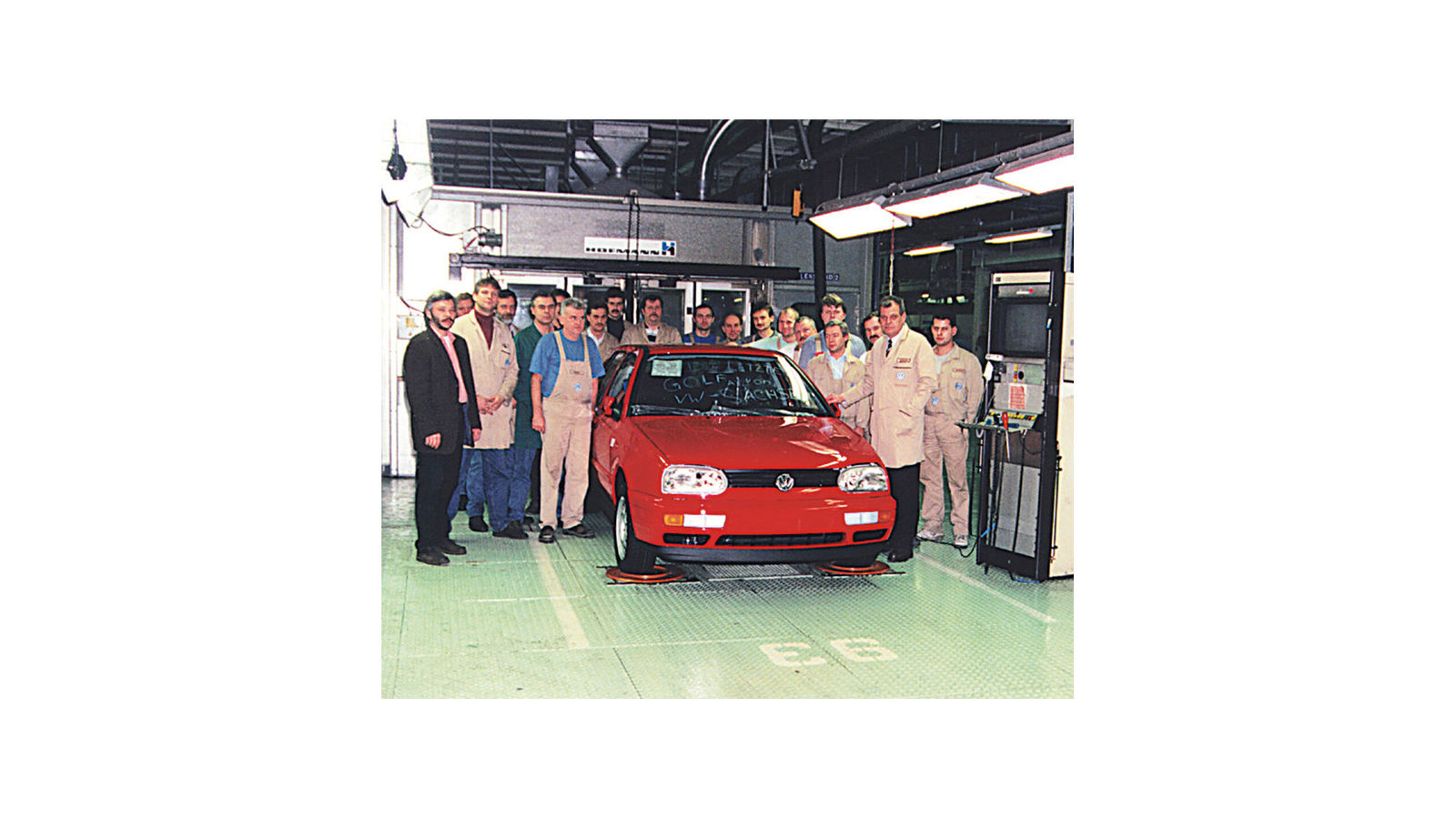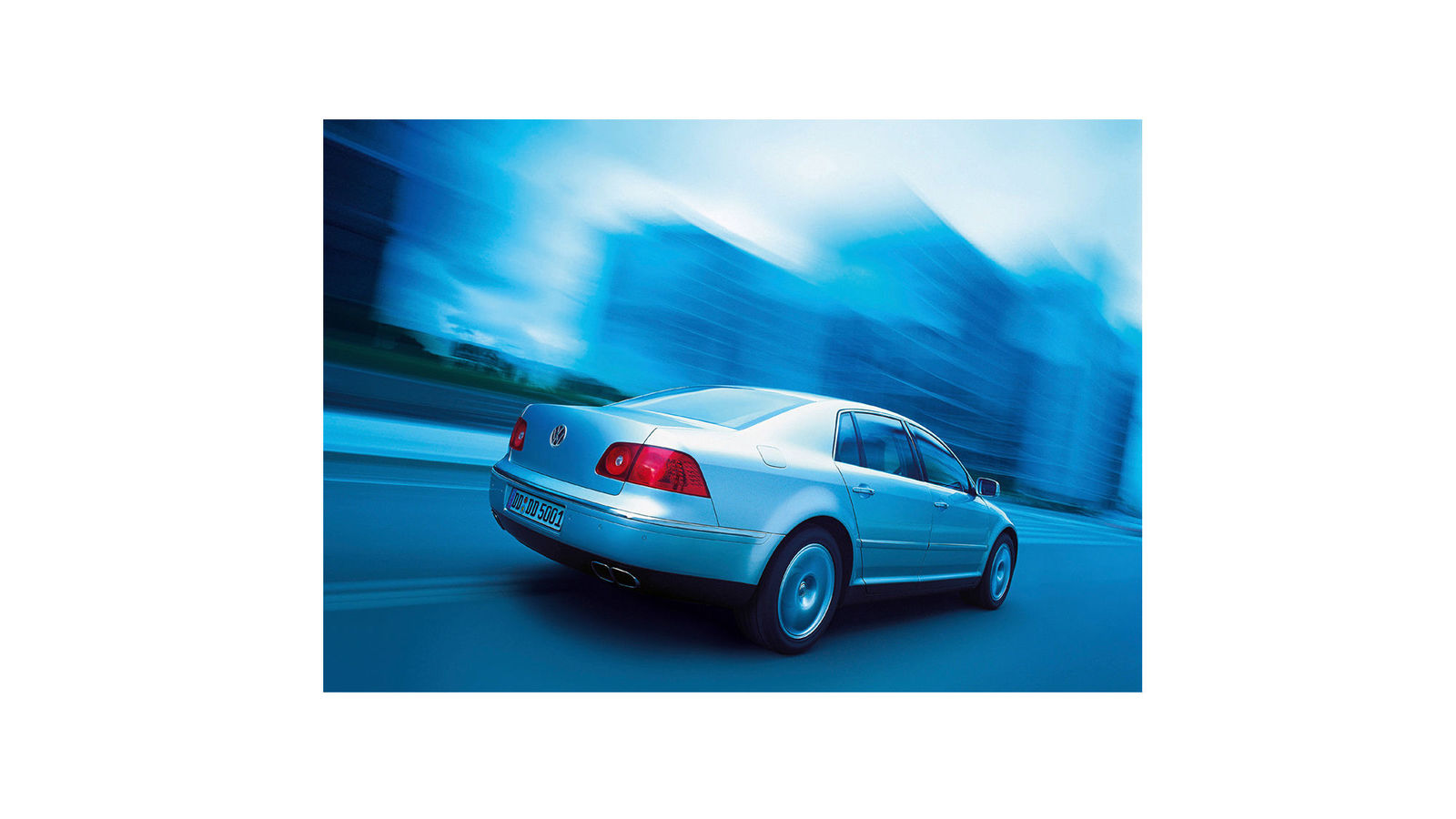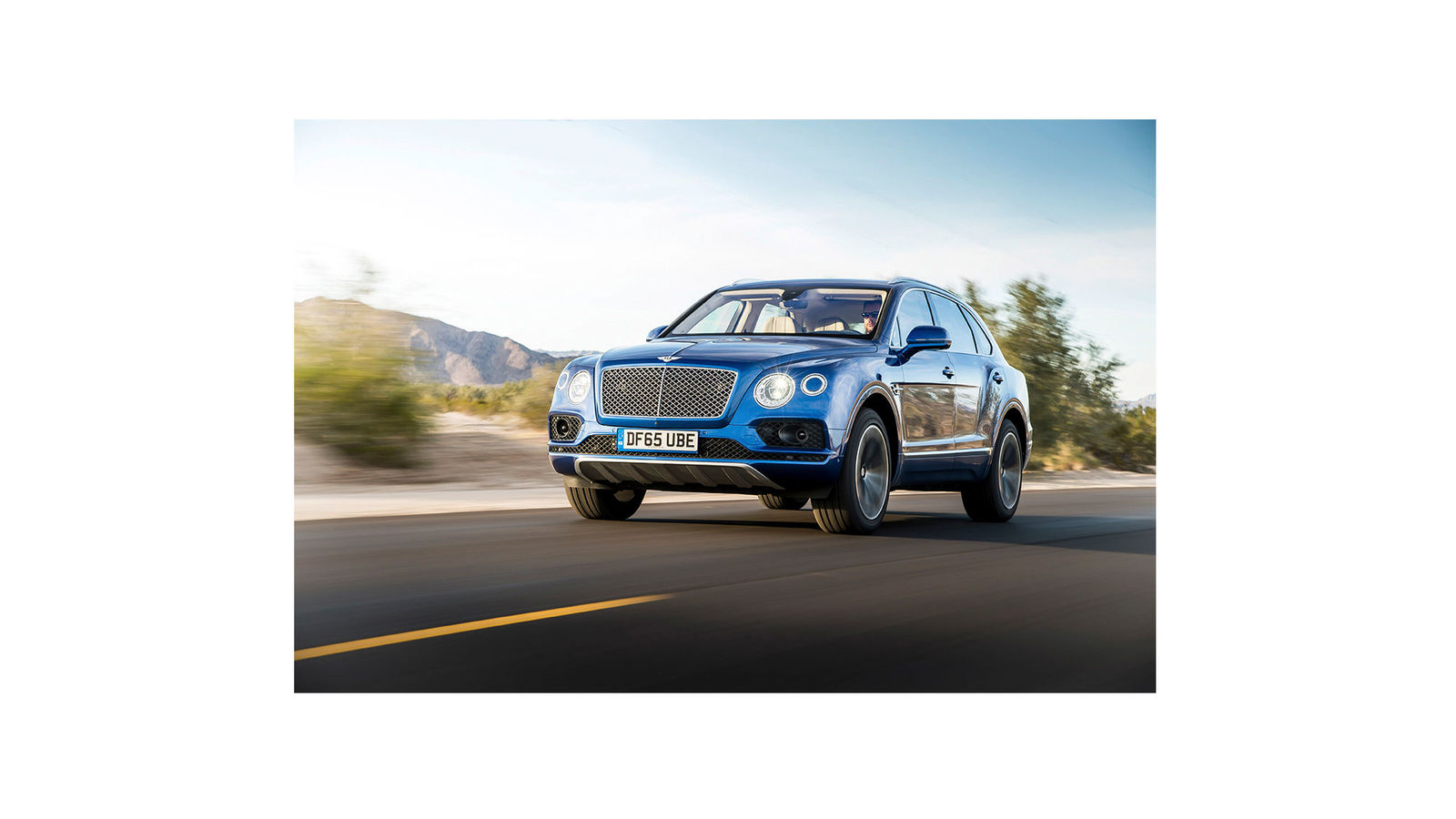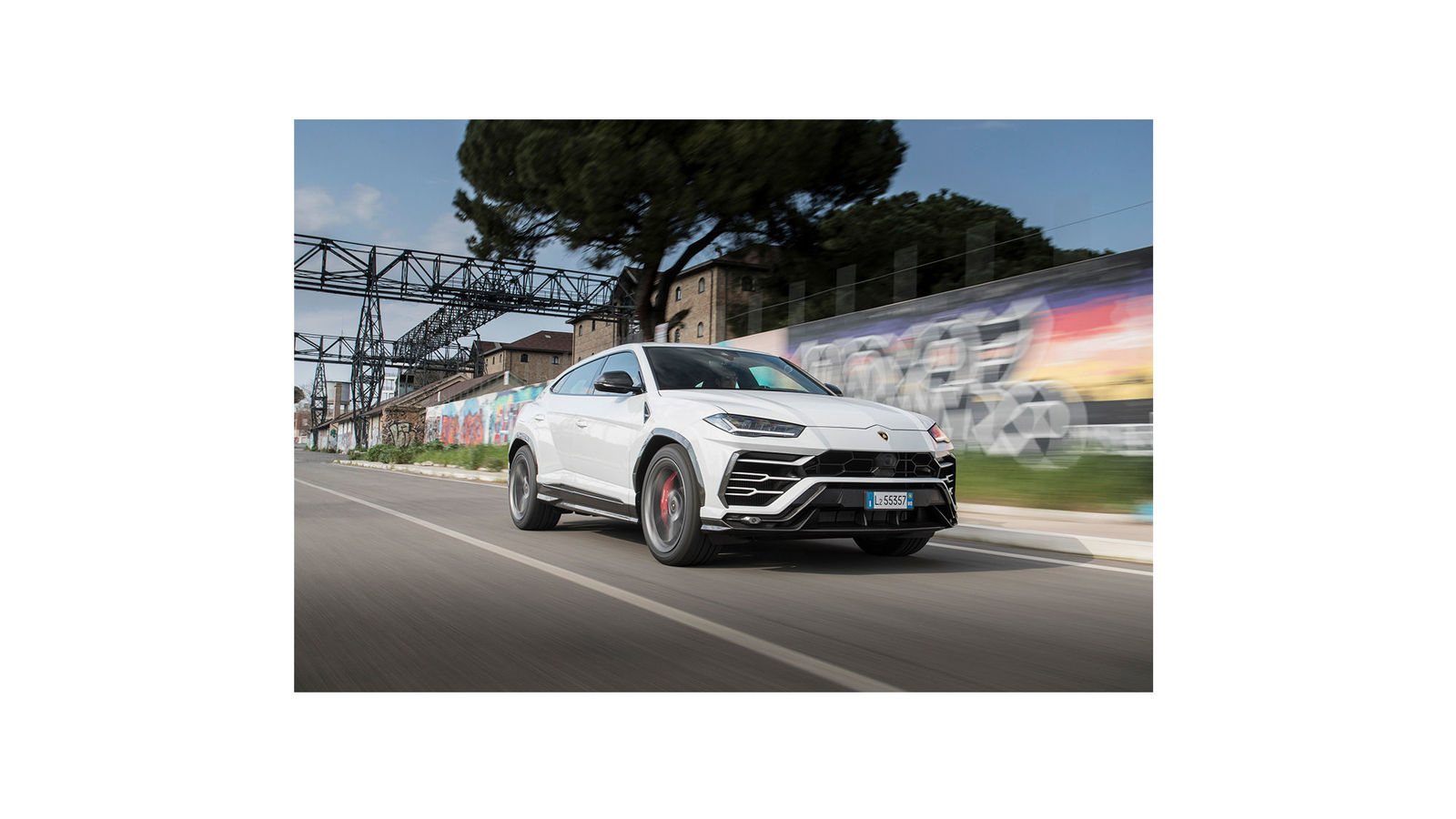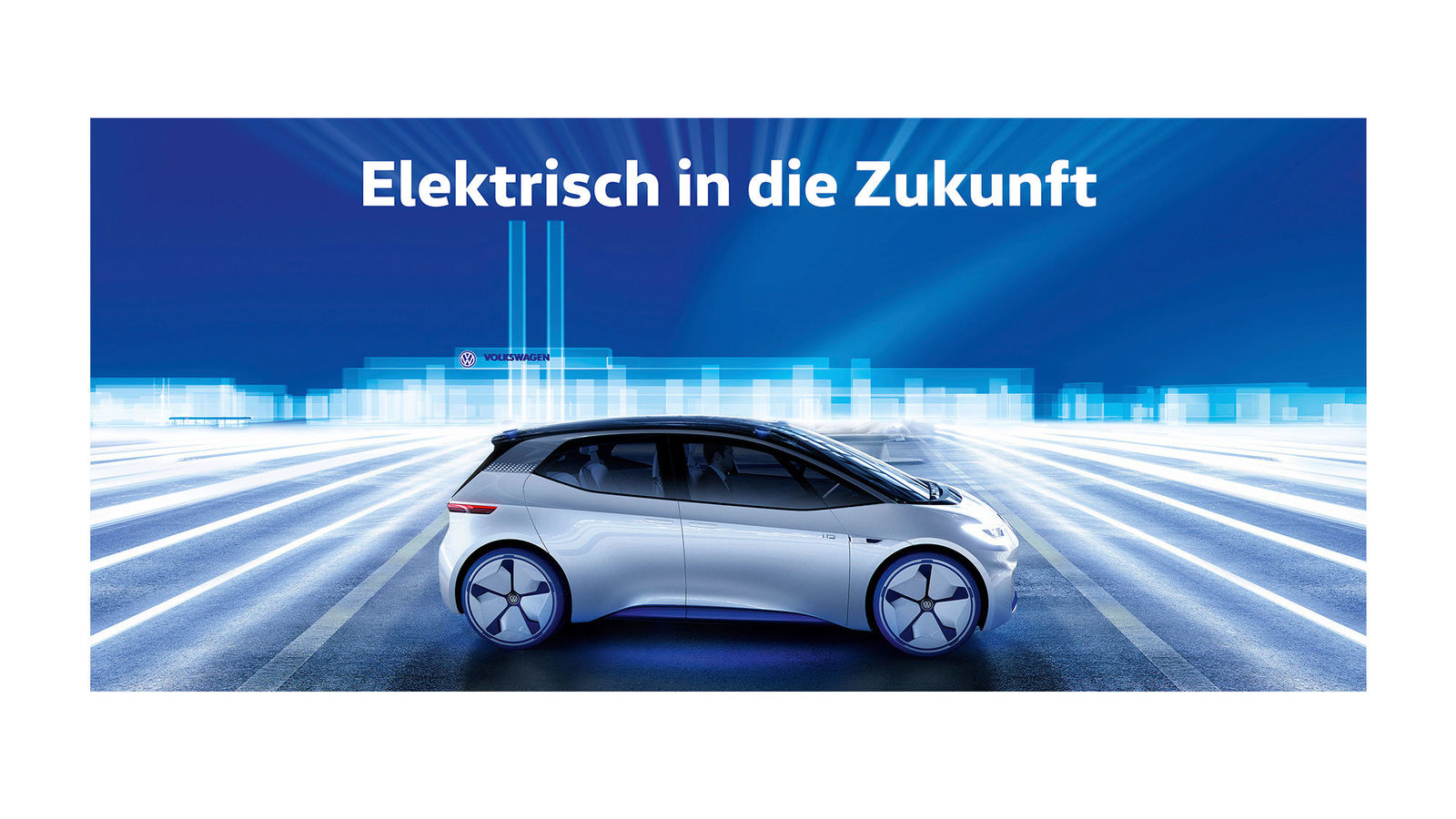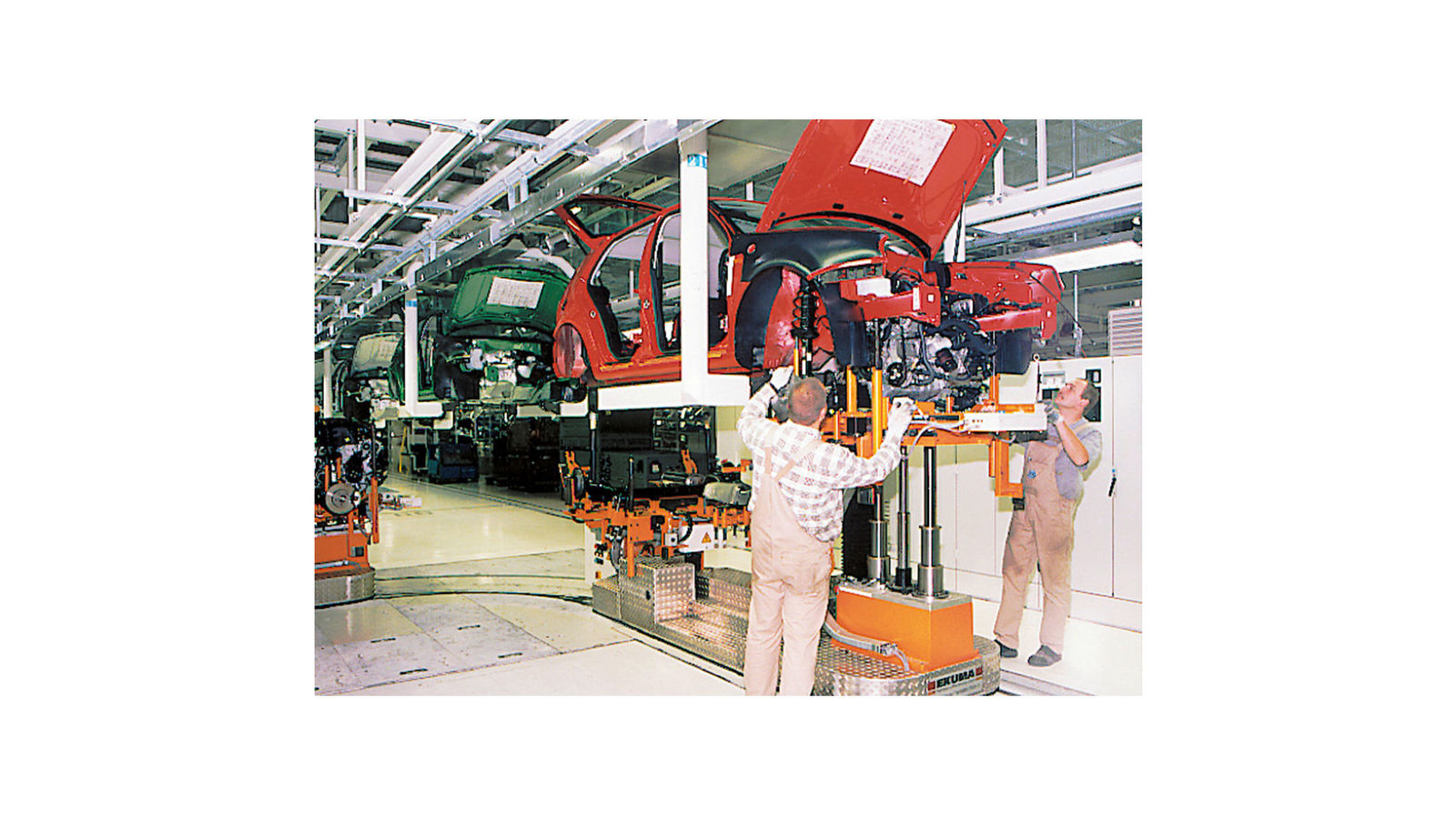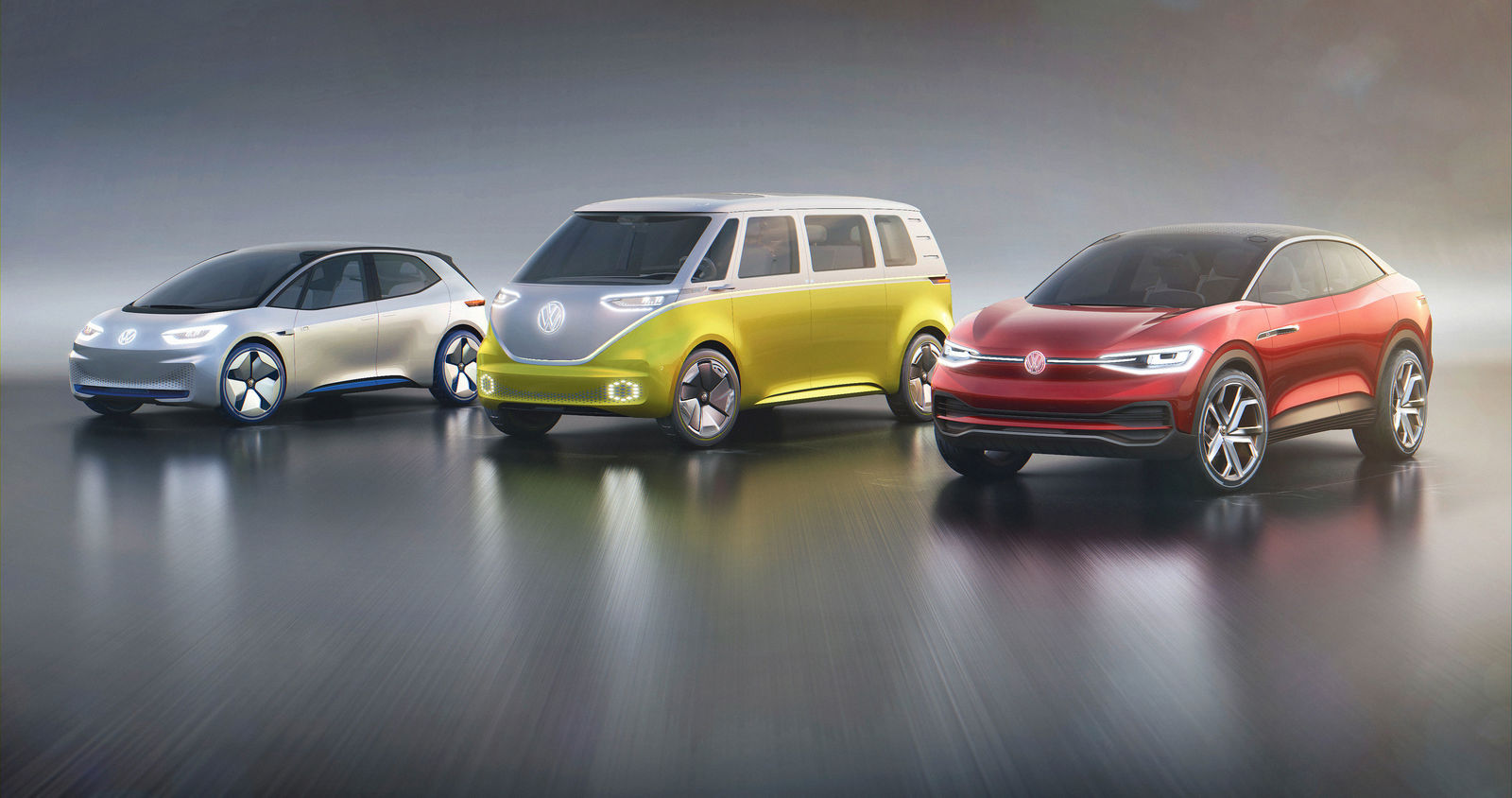The birthplace of Horch, Trabant production site, and electromobility’s future hub: Zwickau is considered the cradle of the Saxon automotive industry and, for the past 114 years, has shaped the automotive construction industry like no other German city. As a beacon of hope and development driver, Volkswagen Group has been a leader in innovations for an entire economic region over the last 28 years.
Car city Zwickau: From Horch to e-mobility
Zwickau has been considered the cradle of the Saxon automotive industry for 114 years. By 2020, the Volkswagen Group will develop the site to become Europe’s largest competence center for electromobility. A chronicle.
The completion of the first GDR Volkswagen Polo in the production hall of the IFA-Kombinat PKW /Industrieverband Fahrzeugbau [“Industrial Association for Vehicle Construction”] on May 21, 1990, and breaking ground for the new automobile plant on September 26, 1990, in the town of Mosel – an independent municipality at the time – by Zwickau, marked the start of a new chapter in the city’s long automotive history. The dawn of this era had already begun on May 10, 1904.
August Horch, founder of the Saxon automobile industry
On that day the German mechanical engineer August Horch moved his company A. Horch Cie. – first established in Cologne-Ehrenfeld in 1899 and subsequently continued in Reichenbach (Vogtland) from 1902 onward – to Zwickau. With the official registration of his company in the Zwickau trade registry as A. Horch & Cie. Motorwagenwerke AG, he rose to become the founding father of the Saxon automotive industry. As early as 1900, the car pioneer developed an automobile with a shockfree engine (an engine that transfers power evenly and not erratically to the drive shaft, and subsequently to the wheels) and introduced the first four-cylinder German car in 1903.
Yet August Horch did not only stand for the quality, luxury and technical progress of the Horch cars. After he left the company in 1909, he also became responsible for founding the Audi Automobilwerke GmbH that same year and brought the first Audi to market in Zwickau in 1910. The company grew to become a world leader in premium car brands in steps: first by merging with the Horch, Wanderer and DKW brands to form the Auto Union AG in 1932, then the renewed founding in 1949 as Auto Union GmbH in Ingolstadt, followed by the later merger with the NSU Motorenwerke AG in 1969 and finally, the founding of Audi AG in 1985. Audi became part of the Volkswagen Group in 1965.
From Trabant to Polo and Golf
The Volkswagen Group continued Zwickau’s storied automotive manufacturing tradition with the establishment of Volkswagen Sachsen GmbH on December 12, 1990. The Volkswagen Group’s initial investment of 4 billion DM went into the construction of a new car manufacturing plant conceived for the production of the Golf.
Sometime earlier the transition from mass production of the Trabant – which had been in operation since 1957 at the VEB Sachsenring Automobilwerke – to modern new cars with catalytic converters had become apparent, so the Volkswagen Group established the Volkswagen IFA-PKW GmbH together with the IFA-Kombinat for passenger cars in the GDR on December 22, 1989. Thereafter the “East’s” Trabi and the “West’s” Polo both rolled off the assembly line at the same time from the Sachsenring plant of the IFA-Kombinats PKW over a period of three months, from May 21, 1990 to August 1990. While the last “Trabi” made at the plant was a skyblue Trabant with a Polo engine under the plastic hood. The first “Saxon” Polo was an alpine white car in a hatchback version, equipped with a 55-hp engine. A total of 17,978 cars were produced in Mosel until September 12, 1991.
The start of Golf production in the assembly halls of the new automotive plant under construction on February 15, 1991, marked the launch of Volkswagen Group’s mass production at the Saxon site. By October 1991, the 20,000-car mark had already been reached and in September 1992 it had already grown to 100,000.
Innovation and environmental protection
Even then the Volkswagen Group was already attaching great importance to investments in the infrastructure and an improved environment at their site locations. For example, the Volkswagen Group built a natural-gas-based heating plant on the Mosel by Zwickau factory premises in November 1991, followed by a wastewater center in summer 1992. Another Volkswagen Group response to the increasing challenges regarding environmental protection was also exemplified by the Golf Ecomatic, which went into serial production exclusively in Mosel in September 1993. Its engine shut itself off automatically when the gas pedal was not in use or the car was at a standstill and could be started again simply by accelerating while driving or by shifting into gear and accelerating from a stationary state. The installation of modern heat recycling systems for incoming/outgoing air simultaneously increased the Group’s energy efficiency at the location. Furthermore, the Golf CitySTROMer celebrated its premiere in February 1994. It was the first fully-electrical Golf that was built as the Volkswagen Group’s first series model exclusively produced there. The reward for this commitment was the award of the European Environment Certificate in 1996.
Furthermore, the Golf CitySTROMer celebrated its premiere in February 1994. It was the first fully-electrical Golf that was built as the Volkswagen Group’s first series model exclusively produced there. The reward for this commitment was the award of the European Environment Certificate in 1996.
However, through regular, continual development and application of cutting-edge technologies such as the “turntable concept”, the Volkswagen Group grew the Mosel by Zwickau site to one of Europe’s most modern automotive manufacturing facilities. At the same time, new, technically compatible equipment made it possible to quickly switch models so that, starting in 1996, the factory was able to manufacture two different passenger cars like the Volkswagen Golf and Volkswagen Passat simultaneously and flexibly. The highlight was a new transportation system that was able to move the chassis and vehicles across a distance of 1.240 meters through the hall via an overhead electric track with special uptake ability.
The plant was also an innovative pioneer in modular car construction. From the beginning, module suppliers who set up shop near the plant could pre-assemble complex component groups from individual parts, test and deliver them directly to the exact installation location in the final assembly line at the factory without having to resort to interim storage. In 1998, Volkswagen Sachsen GmbH won the German Logistics Prize for their collaboration with module suppliers.
The plant breaks records
The success story at the Mosel location is also evident in the production records that the Group achieved at the Saxon site starting in 1998. That year the automobile factory was operating at full capacity and was able to celebrate the anniversary of the 250,000th finished Volkswagen in a year.
The anniversary car was a fourth-generation Golf equipped with a 110-hp TDI engine and a right-hand drive version destined for the English market. With that the Saxon subsidiary of Volkswagen had evolved into the company with the highest sales in the former East German states. The one millionth Volkswagen from Saxony that rolled off the assembly line followed on July 9, 1999. In 2003 the Passat became the first Volkswagen model to exceed the one-millionth vehicle produced at the factory single-handedly. In February 2005 the one-millionth Golf model followed suit.
With the production of chassis for the Phaeton (until 2016) and Bentley starting in December 2001, Volkswagen Group expanded the vehicles / chassis manufactured at the plant by two luxury models. SInce 2017, chassis for the Lamborghini Urus (2) have also been produced. Currently 1,350 vehicles / chassis for Bentley, Lamborghini, and Volkswagen are produced by 7,700 employees. Furthermore, the factory also encompasses a customer and service center and a production site at the St. Egidien location, where special vehicles and gas racks are manufactured.
Most important site for electromobility
The Volkswagen Group’s most important goal for the coming years at the Zwickau location, however, is reducing CO2 emissions and preparing the facility for the e-mobility era. To that end, in December 2013 a newly constructed co-generation plant able to reduce annual CO2 emissions by 23,000 tons went online. In 2014 a photovoltaic facility took up operations. It can generate around 90,000 kW of electrical energy and feeds directly into the power supply of the end assembly. That way, up to 80 tons of CO2 emissions can be prevented annually. In 2015, exactly 25 years after the first Volkswagen manufactured in Zwickau rolled off the assembly line, an energy park with an integrated e-charging station went into operation on the premises of the automotive production complex. The energy park utilizes wind power and photovoltaics to generate electricity. And in 2018, Volkswagen Sachsen GmbH again signed a collaborative environment declaration to protect the environment and conserve natural resources.
Volkswagen aim for the site:
Zwickau will receive investments amounting to 1.2 billion euros by the end of 2020, in order to develop it as the first, pure e-mobility location and as the hub for e-mobility in Europe. The first e-car will be built in Zwickau at the end of 2019.
Most important site for electromobility
The Volkswagen Group’s most important goal for the coming years at the Zwickau location, however, is reducing CO2 emissions and preparing the facility for the e-mobility era. To that end, in December 2013 a newly constructed co-generation plant able to reduce annual CO2 emissions by 23,000 tons went online. In 2014 a photovoltaic facility took up operations. It can generate around 90,000 kW of electrical energy and feeds directly into the power supply of the end assembly. That way, up to 80 tons of CO2 emissions can be prevented annually. In 2015, exactly 25 years after the first Volkswagen manufactured in Zwickau rolled off the assembly line, an energy park with an integrated e-charging station went into operation on the premises of the automotive production complex. The energy park utilizes wind power and photovoltaics to generate electricity. And in 2018, Volkswagen Sachsen GmbH again signed a collaborative environment declaration to protect the environment and conserve natural resources.
Volkswagen aim for the site:
Zwickau will receive investments amounting to 1.2 billion euros by the end of 2020, in order to develop it as the first, pure e-mobility location and as the hub for e-mobility in Europe. The first e-car will be built in Zwickau at the end of 2019.
